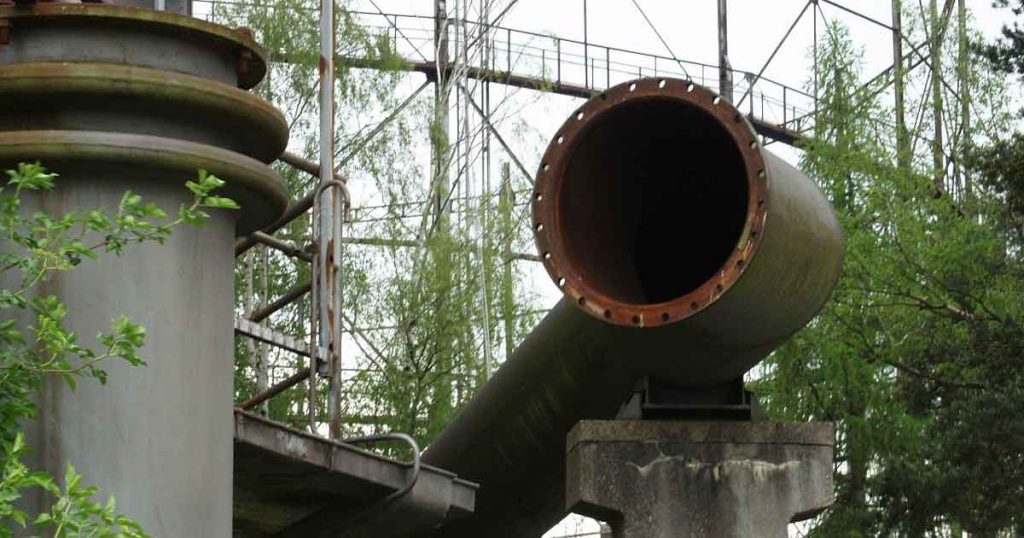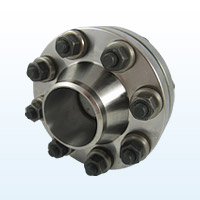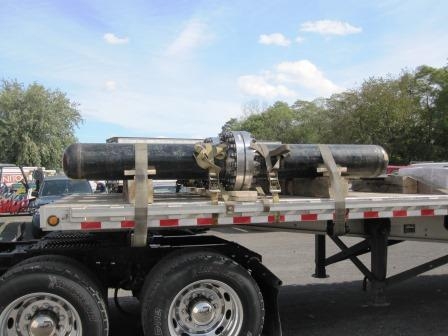Monolithic Insulating Joint vs. Dielectric Flange Kit
A decade ago, our company was asked to take on the Barlow monolithic insulation joint, an alternative to the popular dielectric flange kit to support cathodic protection for combatting pipeline corrosion. At the time, the flange isolation kit was the preferred method over the monolithic joint because of the long lead time (30 weeks), the initial cost, and the little track record in the United States.
A decade later reveals that the monolithic insolation joint is the preferred method for providing electrical isolation between segments in a gas pipeline.
Flange Isolation vs. Joint Isolation
Whether gas pipelines are buried, aboveground, or underwater, they need to be protected against corrosion from air, water, and electrical currents caused by lightning.
Flange isolation and joint isolation are two ways of preventing electrochemical reactions from occurring between two different metals by breaking the metal path or preventing the current in the cathodic protection (CP) system from traveling beyond the area protected by the CP system.
What is Cathodic Protection?
Cathodic protection (CP) is used to control a metal substance’s corrosion. This science is used in fuel tanks, pier pilings, ships, offshore oil platforms and casings, metal reinforcement bars for concrete structures, and pipelines. By turning a gas pipeline into a cathode, the corrosion is prevented or substantially slowed. We supplement gas pipelines with cathodic protection after using a primary anti-corrosion system (e.g., coating or wrap such as Trenton Wax Tape). Otherwise, the cathodic protection required to combat corrosion for an uncoated pipeline is excessive.
What is a Flange Insulation Kit?
The use of flange insulating kits (dielectric flange kits) is the most common method of controlling losses from corrosion in pipelines. They can control stray electric currents, which increases the effectiveness of a cathodic protection system. There are four main types of gasket isolation kits, designated as F, E, D, and O, and each usually contains one washer for each nut, one full-length insulating sleeve for each bolt, a gasket, and thick-plated steel washers for each nut.
While the flange insulating kits may control stray electric currents, they do not offer long-term electrical isolation. They also are flanged into the pipeline and can cause short circuits in flange isolation assemblies and require maintenance.
What is a Monolithic Insulating Joint?
The monolithic insulating joint provides joint isolation and is an alternative to insulating flange kits. This method is widely used in the oil and gas industry in Middle Eastern and European countries and making some progress in the United States. Historically their benefits have been overshadowed by long lead times from European manufacturers though new US manufacturers appeal to major transmission companies.
Video – Monolithic Isolation Joint in Pipe
U.S. Monolithic Insulating Joint Manufacturer
IMAC Systems acquired Barlow, a United States manufacturer of insulating joints, in 1998. Barlow had been manufacturing insulating flange joints for nearly 60 years and was a reliable source on the east coast, with no reported failures. For ten years, we, Linc Energy Systems, have sold IMAC Systems Barlow insulating joints moving the product westward.
Monolithic Insulating Joints vs. Insulating Flange Kits
Historically, the two most significant complaints about monolithic insulating joints have been availability and upfront costs.
- The availability issue has been resolved with US manufacturers such as IMAC Systems, offering Barlow joints with stock availability, fully assembled and tested in Pennsylvania. The Barlow installation is straightforward, with two butt welds and no assembly necessary, allowing for the easiest and safest installation method for electrical isolation and cathodic protection.
- The often perceived secondary disadvantage is the upfront expense of an insulating joint, which can be twice the cost of an insulating flange kit. However, given the insulating joint’s lifecycle, product superiority, and no maintenance, cost does not seem to hinder their use.
The Barlow insulated joints have become the preferred insulating method of corrosion control for many utility companies and contractors because of these factors. The Barlow product line includes TMK Surge Arrestors, TMKE Fiberglass surge arrestor enclosures, Testations®, and Testation®, housing boxes. Barlow Insulating flange joints are very reliable in eliminating leaks due to improper installations.
Barlow Insulating Joints
The Barlow insulating joints come preassembled and pretested versus the standard insulating flange kit, which requires a skilled technician to assemble on-site. By using the insulating joint, the company saves on-site labor. The joints are also less likely to fail from an improper installation, rendering a CP system ineffective and resulting in internal and external corrosion.
With an insulating joint, serviceability and maintenance are simplified. Whereas, when using an insulating flange kit, the system may become shorted when buried (from settling, thermal expansion, or over-tightening). In this case, the cost to repair a damaged or leaking system significantly exceeds the initial investment of an insulating joint. It is also more likely that the pipeline would be shut down if maintenance or replacement is required.
When evaluating the advantages and disadvantages of joint versus flange isolation, monolithic insulating joints are the most beneficial and offset the initial investment.
If you would like more information on the Barlow monolithic insulating joints, message us now or visit our Sales Team page to connect with one of our staff.








Thanks for sharing this post with us!!
I am working in oil& gas industries- engg. consultants. I never came across the failure of Insulating joint but insulating flange kit we never used in high pressure oil pipeline and no question of gas pipeline, so this is the limitation for insulating flange kit,main reason is it may fail from thermal expansion. or over tightening or poor or improper work and who will take the burden of rework. So thanks for the sharing the comparison.
Thanks for the comparision detail.
I would suggest insulating flange kits because it omes with the same outside diameter of the flanges. Hence, the foreign material collection between the flange faces is prevented. It can also withstand enormous amount of temperature and pressure.
A very good blog post! Thanks for sharing it with us flange insulation gaskets Provides greater resistance to over compression and cracking.
Very interesting point of view. From the 2012 in Mexico we started to manufacture the Monolithic Insulating Joints with components from both U.S.A. and Mexico. While we manufacture both the flange insulating joints and the monolithic joints, we had been seeing a faster growth in the flange joints, I believe that it is mainly driven by a lower initial capital expense and that in many cases the intent is to replace preexisting flange joints.
Hi, I am looking for a monolithic isolation joint or a pipe to be isolated on both side. The internal area needs to be coated or better lined that a pig run won’t damage the coating/liner. the coating/liner length is 7.5′ and the diameter of the MIJ or pipe is 30″
Thank you,
Hongbo